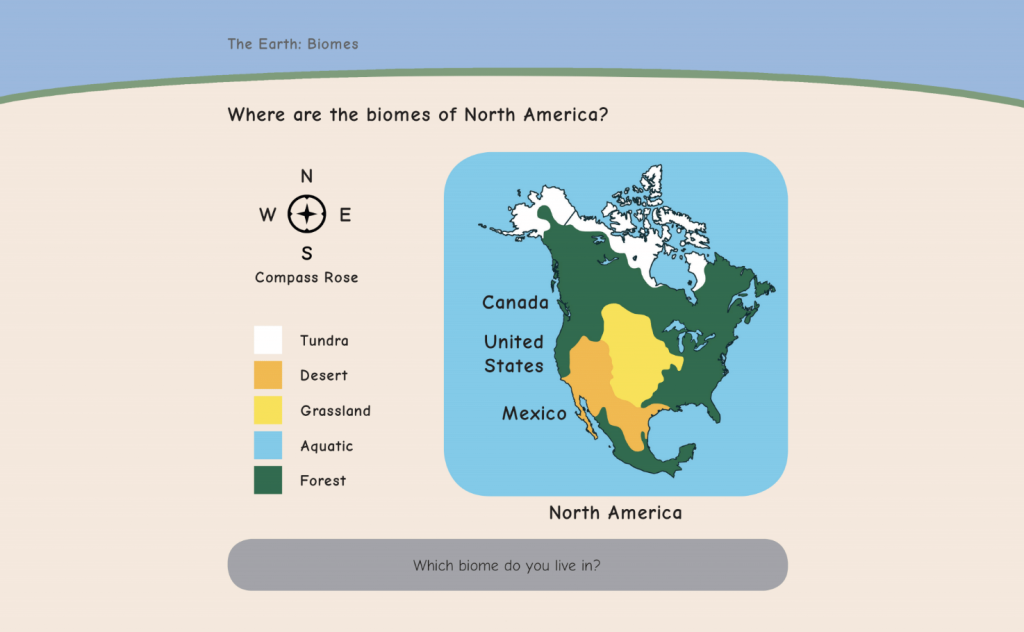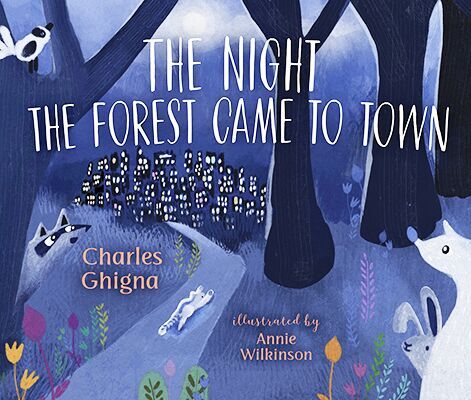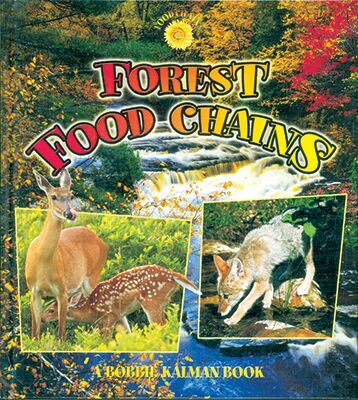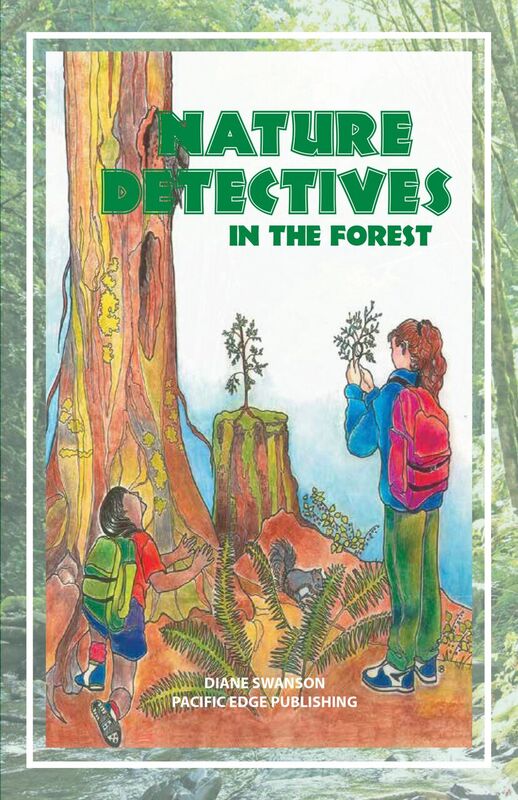This article was previously published in Canadian Teacher Magazine’s Winter 2019 issue.
Biomes are very large ecological areas. Each biome is defined by its climate, vegetation, wildlife and geology. There are five types of biomes: tundra, desert, grassland, aquatic and forest. These biomes are all found in North America, with the forest biome being the largest.

From The Earth, Our Home (Credit: Strong Nations Publishing)
Forest Regions
Forested land makes up 40% of Canada’s land mass, and Canada’s forests account for 10% of the world’s total forest cover. This land consists of a number of geographical areas that we call forest regions. Each region is characterized by the dominant tree species that grows there.
1. Acadian: The Acadian forest region is located in the Maritimes. The dominant tree species are yellow birch, balsam fir, spruce, maple and aspen.
2. Carolinian: This forest region is found in southwestern Ontario. Deciduous trees such as beech, oak, black walnut and maple grow there.
3. Great Lakes-St. Lawrence: This forest region is found in central Canada. The dominant tree species are maple, oak, hemlock, red pine, eastern white pine and yellow birch.
4. Boreal: The Boreal forest is found in northern Canada. Willow, tamarack, spruce, trembling aspen, balsam fir and jack pine are found there.
5. Subalpine: This forest region is found in British Columbia and Alberta. Lodgepole pine, spruce and subalpine fir are the dominant species.
6. Montane: The Montane forest region is found in British Columbia and Alberta. Trembling aspen, lodgepole pine, Douglas-fir and ponderosa pine grow there.
7. Coast: This forest region is found on the West Coast of British Columbia. Western red cedar, Douglas-fir and western hemlock are the dominant species.
8. Columbia: The Columbia forest region is found in British Columbia. Douglas-fir, western hemlock and western red cedar grow there.
Forest Books (Fiction and Non-Fiction)
These titles would be a great addition to a classroom collection when planning a literature-based forest theme. Most of these books connect directly to the Earth Science and Social Studies curricula and some contain authentic Indigenous cultural content.
 The Night the Forest Came to Town
The Night the Forest Came to Town
by Charles Chigna, illustrated by Annie Wilkinson
Orca Book Publishers
ISBN 9781459816503
This beautifully illustrated picture book spans the time between dusk and dawn. The reader watches the forest transform the city into a vibrant and colourful garden. A great read-aloud for primary students, this book would be a good entry point for a study of forests and re-wilding projects.
 Tree Song
Tree Song
by Tiffany Stone, illustrated by Holly Hatam
Annick Press
ISBN 1-77321-001-8
Tree Song follows the life cycle of a tree—from the sprouting of a seed through to maturity, and, finally, to its collapse and the sprouting of a new seedling. The playful, lyrical text make this book a great read-aloud. It would make an effective introduction to a forest theme, a study of life cycles, or a way to look at the changes in the seasons, as well as a thoughtful look at conservation.
 Forest Food Chains
Forest Food Chains
by Bobbie Kalman
Crabtree Publishing
ISBN 978-0-7787-1989-2
This informative book describes the concept of food chains within a temperate forest setting. The reader is supported by a number of non-fiction text features (photos, diagrams, captions, fact boxes, glossary, index, etc.).
 The Cedar Tree: Our Culture, Our Tree
The Cedar Tree: Our Culture, Our Tree
by Bobbie Wildman
Strong Nations Publishing
ISBN 978-1-77174-312-9
The cedar tree is sacred to the Kwakwaka’wakw people as the roots, bark, branches and trunk all provide many essentials for life (housing, clothing, cooking utensils, transportation, etc.). This book describes the yellow and red cedar and the protocols for harvesting. Many of the items that can be made from this culturally important tree are shown in the book. Strong Nations has published several books about the cedar tree, including:
The Western Red Cedar by Brenda Boreham, ISBN 978-1-77174-045-6
The Cedar Tree: The Heart of Our People by Celestine Aleck, ISBN 978-1-77174-129-3
 The Cedar Club Forest Detectives
The Cedar Club Forest Detectives
by Diane Swanson
Pacific Edge Publishing
ISBN 978-1-895110-42-4
The Cedar Club Forest Detectives and the other titles in Pacific Edge Publishing’s Nature Detectives Series have proved to be a valuable resource when planning a language-based unit of study with elementary school students. As the five chapters unfold, readers follow the experience of a group of hikers and their nature guide as they discover the wonders of a forest ecosystem. They learn how forest plants and animals interact and also depend on nonliving things such as water, light and soil for their survival. Indigenous Peoples’ uses for plants and animals, fossils and ways that humans harm— and help—the forest are also included.
A teacher’s guide for this book is also available.
 The Story of the Tamarack Tree
The Story of the Tamarack Tree
by Leah Marie Dorion
Strong Nations Publishing
ISBN 978-1-77174-321-1
The tamarack is North America’s most northerly tree and is of cultural significance to the people in that area. Told by Metis artist, storyteller and teacher Leah Marie Dorion, this story describes what happened when the tamarack tree jealously sought the attention of the Muskeg people.
Some Other Titles of Note
A Walk in the Boreal Forest, by Rebecca L. Johnson, Lerner Publishing Group ISBN 978-1-57505-528-2
A Walk in the Deciduous Forest, by Rebecca L. Johnson, Lerner Publishing Group ISBN 978-1-57505-527-5
Life in the Boreal Forest, by Brenda Z. Guiberson, Groundwood Books ISBN 978-0-88899-956-6
Berries of the Dakelh Territory, by Cecilia John, Strong Nations Publishing ISBN 978-1-77174-323-5
Deep Roots: How Trees Sustain Our Planet, by Nikki Tate, Orca Book Publishers ISBN 978-1-45980-582-8
Making a Canoe, by Bill Helin, Strong Nations Publishing ISBN 978-1-77174-112-5
Maple Moon, by Connie Brummel Crook , Fitzhenry and Whiteside ISBN 978-0-77376-098-1
Our Traditional Medicines, by Sally Williams, Strong Nations Publishing ISBN 978-1-77174-309-9
Stella, Fairy of the Forest, by Marie-Louise Gay, Groundwood Books ISBN 978-0-88899-448-6
The Salmon Bears: Giants of the Great Bear Rainforest, by Ian McAllister and Nicholas Read, Orca Book Publisher, ISBN 978-1-55469-205-7
Wendy the Whitebark Pine by Darcee O’Hearn, Ingram Book Company ISBN 978-1-525510-55-7

ABOUT THE AUTHOR
Brenda Boreham
Brenda has 35 years of classroom experience. She has presented workshops on literacy strategies, and has written a number of resources for teachers. She remains passionate about matching up kids with books.
This article is from Canadian Teacher Magazine’s Spring 2020 issue.











